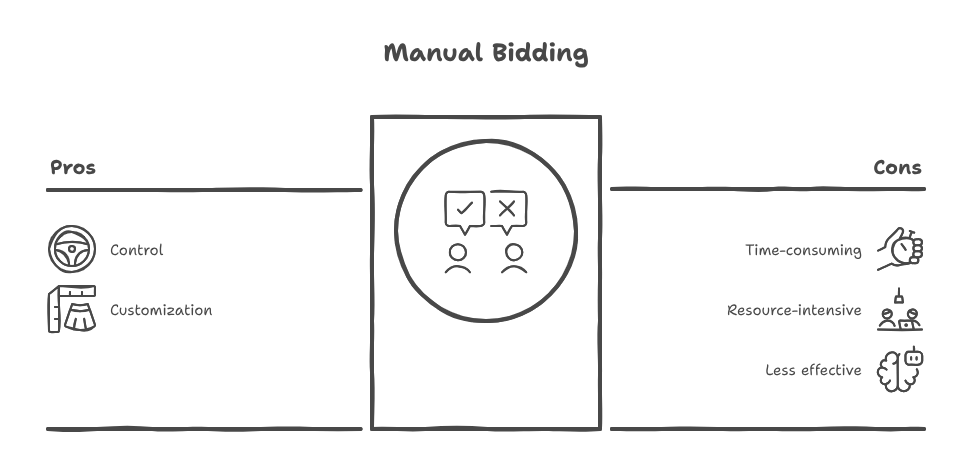In the fast-changing world of digital marketing, Google Ads remains a top contender for businesses aiming to reach high-intent audiences. But in 2025, what worked in previous years no longer guarantees results. From algorithm updates to shifting user behavior and AI-driven automation, your Google Ads strategy needs a major refresh.
In this blog, we break down what’s working right now, what’s failing, and how you can stay ahead with smarter, scalable Google Ads campaigns.
What’s Working in Google Ads Right Now
1. AI-Powered Smart Bidding (Still a Winner)
Google’s Smart Bidding algorithms continue to outperform manual bidding when used correctly. Strategies like Target ROAS, Maximize Conversions, and Target CPA are getting sharper with machine learning.
Pro Tip: Let campaigns run for at least 7–14 days before making big changes. AI thrives on data and consistency.
2. Responsive Search Ads (RSAs Are Dominating)
As of 2022, Expanded Text Ads were sunsetted—and now in 2025, Responsive Search Ads are the default. They allow Google to mix and match headlines and descriptions for the best-performing combinations.
Optimization tip: Use pinning sparingly and include your top-performing keywords in at least 2–3 headlines.
3. First-Party Data & Customer Match
With the death of third-party cookies looming, first-party data has become the new gold. Uploading customer lists, using CRM integrations, and building Customer Match audiences leads to significantly better targeting.
Pair this with remarketing campaigns or lookalike audiences for powerful results.
4. Performance Max Campaigns (If Done Right)
Introduced in late 2021 and refined over time, Performance Max is a fully automated campaign type that spans across all Google platforms (Search, YouTube, Display, Maps, Gmail).
In 2025, it’s especially useful for eCommerce, local services, and lead generation—but only if you feed it high-quality assets and audience signals.
Tip: Don’t skip adding audience signals, video content, and merchant feed optimization.
5. Keyword Intent Over Volume
In 2025, Google’s algorithm is better at understanding search intent, making keyword selection more strategic. Long gone are the days of stuffing high-volume terms.
Winning strategies now revolve around:
- High commercial intent keywords
- Brand-specific or competitor keywords
- Location-based modifiers
What’s NOT Working Anymore
1. Manual Bidding Without AI Support

While manual bidding may give control, it’s becoming outdated unless you have a large team constantly optimizing. Google’s AI is simply faster, more scalable, and more effective in most use cases.
2. Over-Reliance on Broad Match Without Negative Keywords
Yes, broad match has improved with AI, but using it without adding negative keywords is a recipe for wasted ad spend. Many advertisers in 2025 are burning budget on irrelevant clicks.
Fix it by regularly updating your negative keyword list and analyzing Search Terms Reports weekly.
3. One-Size-Fits-All Landing Pages
Sending all your traffic to a single landing page won’t cut it. In 2025, Google Ads rewards ad relevance and landing page experience more than ever.
Use dynamic landing pages or tailor different versions for each ad group or keyword cluster
4. Ignoring Mobile Optimization
Mobile searches account for over 65% of all paid clicks in 2025. If your landing page isn’t fast, responsive, and designed for mobile UX, your Quality Score and conversion rate will suffer.
5. “Set and Forget” Campaigns
Google Ads is not a slow cooker—you can’t set it and walk away. Advertisers who don’t monitor and optimize campaigns weekly are being outpaced by competitors who do.
High-Authority Keyword Subheading:
Best Google Ads Strategy for Small Businesses in 2025
Small businesses have tighter budgets—but with smart strategy, they can compete with the big players. Here’s what’s working:
- Focus on local campaigns with strong geo-targeting.
- Use Google Ads extensions like callouts, locations, and phone numbers to increase visibility.
- Run lead form extensions to capture potential customers directly from the SERP.
Bonus Tip: Use Remarketing Lists for Search Ads (RLSAs) to retarget users who already visited your site—this lowers cost and boosts conversion.
Essential Metrics to Monitor in 2025
Don’t just look at clicks. In 2025, focus on:
- Conversion Value / Cost (ROAS)
- Impression Share Lost (budget or rank)
- Search Top IS
- Landing Page Experience Score
- First Click Attribution vs Last Click Attribution
Google’s reporting tools, combined with GA4, give a full-funnel view of performance.
Quick Checklist for Winning Google Ads in 2025
✅ Use AI-powered bidding with proper learning periods
✅ Run Performance Max with solid assets & data
✅ Focus on conversion intent keywords, not vanity traffic
✅ Optimize every landing page for speed & relevance
✅ Monitor Search Terms and update negatives weekly
✅ Invest in first-party data and customer match lists
Final Thoughts: Adapt or Fall Behind
The Google Ads landscape in 2025 is more data-driven, automated, and intent-focused than ever. Advertisers who adapt to automation, leverage data smartly, and continuously optimize will thrive.
Those who rely on outdated tactics? They’ll burn budget with little to show for it.

